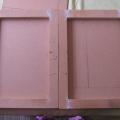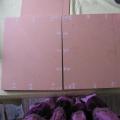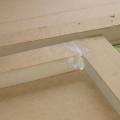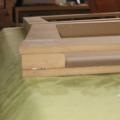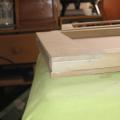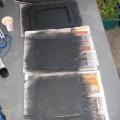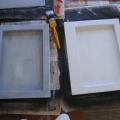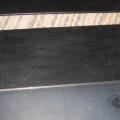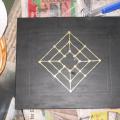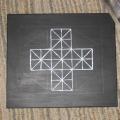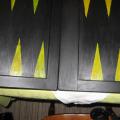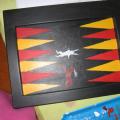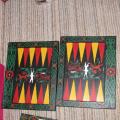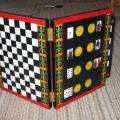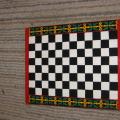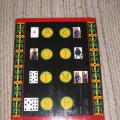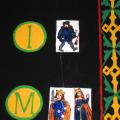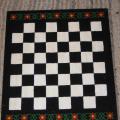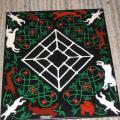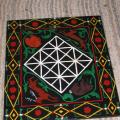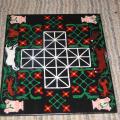You are here
Boite a Jeu/Boardgames Compendium
Intro
This is information relating to the Board Games Compendium I made. I originally started the project with the intention of entering it in a Kingdom competition, in November of 2009. Of course, I only actually started it some time in late September or early-mid October 2009. I finished it (except for more varnishing and a carry bag) in July 2010. It's since become quite well-used, and even more well-travelled.
What I present here is my progress with the compendium as a series of photos. The documentation that I wrote up for it at the time can be found attached as a pdf below (that's way more interesting).
The V&A Museum has since uploaded images of a number of new compendiums that I hadn't previously seen, including only the second extant Glic board which is particularly worthy of note because a) it's painted, b) it's the exact same shape as the other extant Glic board, c) it has a different game on the other side to the other extant board, d) it uses a different deck of cards, and e) there are heraldic devices at the top of the board. For those wanting to look at it, it can be found here. Note that they have it as part of their Museum of Childhood collection, when it is in fact a gambling game for adults, often played in taverns.
Having now made the compendium, and realising that what I have created is actually a painted object in its own right rather than a painted object mimicking an inlaid one, there is a lot more that I would like to do in terms of research. I'd like to spend more time researching design concepts in decoration and embellishment generally, as I really enjoyed working with the design books and noticing overlaps between them and elements in actual artworks. I'd also like to learn more about painting techniques, and the application of paint as a decorative technique generally. I expect I'll get there eventually, it's just a matter of finding time in between everything else that I'm interested in.
In Progress Shots
I don't have a lot of pictures of the compendium as a work in progress, due to being utterly broke and lacking batteries or a charger for my camera while I was making it. Still, there's a few at least:
Things you can do with Putty
The photos below demonstrate my clear lack of skill at cutting anything straight, or sanding to a straight edge, and the remarkable ability of putty to cover over these errors.
Undercoats
Here's some photos of the base layers of paint.
L-to-R: A photo of the spray paint option I tried first. It really didn't work. Although you can't really tell this from the photo, the paint was all streaky and blotchy (this may have reflected my technique and ability with spray paint. Clearly I didn't spend enough time upping my graffiti skills as a teenager); Undercoating with commercial gesso, note the difference two coats makes; After I've done the black undercoat, drawing in the basic board layout with the help of a set square designed for patchwork & quilting.
Painting the Boards - In Progress
L-to-R: My discovery that white paint looks much better than gold; The first few coats of yellow paint resulted in a complete panic and fear that it was going to look utterly crap. This image is after I had applied two or three coats of yellow paint. Yellow generally took four or five coats to look decent; The backgammon board after I finished the blocks of colour, and had just started painting in animals. Note that some of the edges on the coloured segments are still a bit rough; I tidied these up later with the aid of a little more black paint (often several coats), and tiny paint brushes; The backgammon board almost complete; Another incomplete board where you can see all the pencil lines I added. These either got erased or painted over afterwards.
The Finished Product
And now lots of photos of the finished item... starting with the complete compendium standing open:
L-to-R: Courier Chess (I still need to make pieces for this); Two images of the Glic board - the card designs are based on the designs from the woodcut printed playing cards myself and Mistress Katherina Weyssin made; Chess; Nine Men's Morris; Alquerque; Fox & Geese
- Log in to post comments
